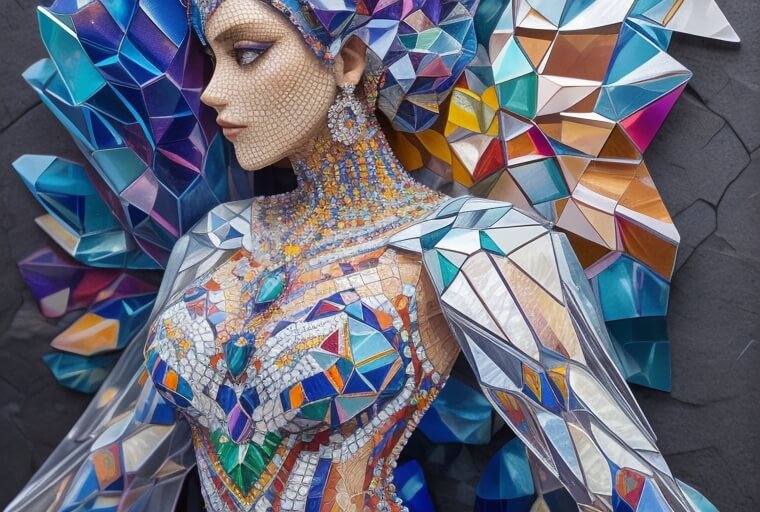In the ever-evolving world of art, where creativity knows no bounds, artists are continually seeking new ways to express themselves and push the boundaries of their craft. One such innovation that has been making waves in the art community is Liquid Crystal Paper, a groundbreaking medium that offers artists a unique canvas to explore and unleash their creative visions.
Liquid Crystal Paper, also known as LCP, is a relatively recent development in the realm of art materials. It was initially developed for commercial and industrial applications, primarily as a flexible and energy-efficient alternative to traditional liquid crystal displays. However, its potential as an artistic medium was soon recognized, and artists began to experiment with its unique properties.
The liquid crystals used in this paper are composed of molecules that have both liquid and crystalline properties. These molecules can change their orientation in response to external stimuli, such as temperature or an electric field. This property is what makes Liquid Crystal Paper so fascinating for artists, as it allows for dynamic and interactive artwork creation.
One of the key characteristics of Liquid Crystal Paper is its ability to change appearance based on temperature variations. When subjected to heat, the liquid crystals align in a specific direction, causing the paper to become transparent. Conversely, when the temperature decreases, the liquid crystals become disordered, rendering the paper opaque.
This unique property enables artists to create mesmerizing artworks that shift and transform with the changing environmental conditions. By manipulating temperature or using heat sources strategically, artists can control the transparency and opacity of the paper, resulting in dynamic and ever-changing compositions.
For example, consider the work of artist Emma Roberts, who has gained recognition for her captivating Liquid Crystal Paper artworks. She employs controlled temperature variations to mimic the changing seasons, allowing viewers to witness the transition from lush greens to fiery autumn hues right before their eyes. The interplay of light and temperature creates a symphony of colors and shapes on her canvas, making each piece a living testament to the beauty of nature’s cyclical rhythms.

Tools and Techniques for Creating Art with Liquid Crystal Paper
Creating art with Liquid Crystal Paper requires a combination of traditional artistic skills and an understanding of the medium’s responsive nature.
Artists use heat sources such as hairdryers, heat guns, or even their hands to manipulate the temperature of the Liquid Crystal Paper. By carefully controlling the application of heat, they can create intricate and evolving patterns on the paper’s surface.
Liquid Crystal Paper pairs well with various other art mediums, including acrylics, watercolors, and markers. Artists often combine these materials to enhance the visual impact of their creations.
Embracing the unpredictability of Liquid Crystal Paper is a vital aspect of the artistic process. Artists often embrace serendipity, allowing the medium’s natural tendencies to guide their creative journey.
Internationally acclaimed artist Mark Chen, for instance, seamlessly blends Liquid Crystal Paper with traditional oil painting techniques. He applies heat strategically to reveal hidden layers of his masterpiece, transforming static portraits into living artworks that seem to breathe and evolve over time. In his series “Metamorphosis of Emotions,” emotions are depicted not as stagnant states but as dynamic, ever-shifting entities, mirroring the complexities of the human experience.
Impact on the Art World
Liquid Crystal Paper has made a significant impact on the art world, revolutionizing the way artists approach their craft.
Artists have begun using Liquid Crystal Paper to create immersive and interactive installations. These installations respond to changes in temperature or lighting conditions, engaging viewers in a multisensory experience that blurs the line between art and science.
For instance, consider the “Crystal Mirage” installation by artist Sofia Ramirez. She utilizes Liquid Crystal Paper panels that change transparency based on visitors’ body heat and movement. As visitors navigate the installation, their body heat creates dynamic patterns and shifting forms on the panels, making each experience unique. This engagement between art and audience transforms passive observers into active participants in the creation of the artwork.
The dynamic nature of Liquid Crystal Paper allows artists to explore the concept of time in their work. By using controlled temperature changes, they can create artworks that evolve over time, inviting viewers to contemplate the impermanence of art and life.
Renowned artist David Langley employs this concept in his series titled “Temporal Reflections.” He utilizes Liquid Crystal Paper to craft intricate mandalas that slowly transform as ambient temperature fluctuates. Viewers are encouraged to spend time with each piece, witnessing the gradual metamorphosis of the artwork. This deliberate slowing of time prompts contemplation on the transient nature of existence and the beauty found in moments of change.
Some artists have embraced Liquid Crystal Paper as a medium for conveying messages related to environmental issues. The medium’s sensitivity to temperature serves as a metaphor for the fragile balance of our planet’s ecosystems, prompting viewers to reflect on the importance of environmental conservation.
In her piece “Climate Chronicles,” artist Maria Hernandez uses Liquid Crystal Paper to create a visual representation of climate change. As temperatures rise in the exhibition space, the artwork’s once-clear landscapes become increasingly obscured, serving as a poignant reminder of the urgency of addressing climate issues.
Challenges and Sustainability
While Liquid Crystal Paper offers a world of creative possibilities, it is not without its challenges. Artists working with this medium often face technical hurdles related to temperature control and the longevity of their artworks. Ensuring that the temperature-sensitive properties of the paper remain intact over time can be a delicate balancing act. Additionally, as with any art form, questions about the environmental impact of materials and production processes arise. Artists and researchers are actively exploring sustainable alternatives and techniques to address these concerns, ensuring that Liquid Crystal Paper art remains both innovative and eco-conscious.
